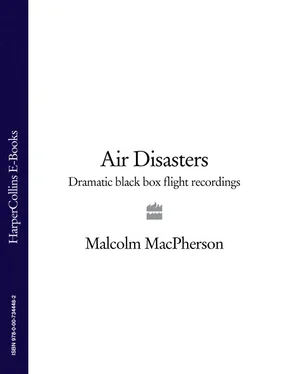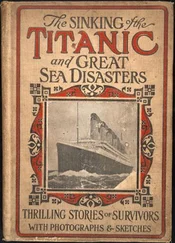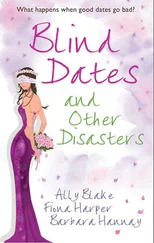AIR DISASTERS
DRAMATIC BLACK BOX FLIGHT RECORDINGS
MALCOLM MACPHERSON
 Collins
Collins
Cover Page
Title Page AIR DISASTERS DRAMATIC BLACK BOX FLIGHT RECORDINGS MALCOLM MACPHERSON Collins
Introduction
Colorado Springs, Colorado, USA 3 March1991
Memphis, Tennessee, USA 7 April 1994
Charlotte, North Carolina, USA 2 July 1994
Pittsburgh, Pennsylvania, USA 8 September 1994
Eight Miles Off East Moriches, New York, USA 17 July 1996
Monroe, Michigan, USA 9 January 1997
Nantucket, Massachusetts, USA 31 October 1999
Marsa El-Brega, Libya 13 January 2000
Off Anacapa Island, California, USA 31 January 2000
Rancho Cordova, California, USA 16 February 2000
Linneus, Maine, USA 19 July 2000
Charles De Gaulle Airport, Paris, France 25 July 2000
Aspen, Colorado, USA 29 March 2001
Near Burdakova, Russia 4 July 2001
Belle Harbor, New York, USA 12 November 2001
Taos, New Mexico, USA 8 November 2002
Charlotte, North Carolina, USA 8 January 2003
Jefferson City, Missouri, USA 14 October 2004
Chicago, Illinois, USA 8 December 2005
Philadelphia, Pennsylvania, USA 7 February 2006
Lexington, Kentucky, USA 27 August 2006
Index
Copyright
About the Publisher
Before the publication in 1984 of my book The Black Box I had called at the offices of the US National Transportation Safety Board (NTSB) in Washington, DC, on the unlikely chance that the Board made available to the public transcripts of commercial air transportation cockpit voice recordings (CVRs), which I knew about from commercial pilot friends who read them out of personal interest and had handed them on to me. My request that day surprised the Public Affairs officer who said that no member of the public had asked to see them before. He wondered out loud what anyone would want with them, as he led me over to thirty or forty transcripts that someone in the office had patiently typed out, copied and stacked up against filing cabinets, looking as if they were ready to be thrown out.
I told him that they fascinated me in a way I could not describe even to myself but their hold on me lasted long after I read them. Maybe they would interest other like-minded people if they were made available in book form. Come to think of it, he told me, he read the transcripts, too, and not for strictly professional reasons. He could not articulate his interest either, but we sat on the office floor and, from memory, he chose twenty of the transcripts that he thought would be of most interest to me. Before long I staggered out of the building under the weight of at least a score of the transcripts. As soon as possible I set about turning the pages into a form that would make sense to readers like me with no specialized knowledge of flying or of the mechanics of commercial aircraft and aviation. The Black Box, as a specialized book category, was born.
Now, nearly thirty years on, the aviation industry has changed remarkably, as anyone who flies knows. I must say that most of these changes are for the worst from the passengers’ perspective. Today, already cramped spaces in aeroplanes are smaller, meals are worse or in some cases nonexistent, delays are longer, cancelled flights are stacked up higher, rude and indifferent behaviour by officials seems almost routine, and more people like you and me want only a quick and merciful end to the experience of flying between home and destination that does not involve a crash. In 2007 passengers’ complaints to the US Department of Transportation increased by 60 per cent, which means that, for instance, a typical passenger from Washington Dulles Airport was angry enough with the service to complain once every day and a half. In an editorial in the spring of 2008 the Washington Post had this to say: ‘Air travel has gotten so bad these days that going to the airport requires either an exercise in sadomasochism or an abiding faith that everything will be okay. That faith seems to be shattered daily.’ Beneath the surface passengers are seething; to tell the truth, flying is no longer the convenient way to travel, but in America it is the only way, at least with gasoline prices inching up, train services starved of federal funds and bus travel nearly nonexistent. Bad as it is, we have no other choice but to fly.
That said, in one very important—the most important—respect, changes over the years in commercial air travel have been excellent for passengers: whenever we set out to reach a destination by air, we arrive. In other words, though flying might be miserable it is safe, pure and simple, and, remarkably, it is getting more so all the time. As if air safety were a warp zone of science fiction, safety managers for airlines and the government are today reaching beyond known weak links into the realm of ‘what might conceivably happen’ and are making changes for safety before trouble happens, so that passengers never have to experience incidents that did not have a chance to develop.
Indeed, there has been no major aircraft crash in the last seven years in the USA. That’s safety to bank on. Indeed, 2007 was a typically excellent year. With 4.65 billion air passengers travelling worldwide (769 million on aeroplanes based in the US), 965 people died of all causes in 136 incidents, which were 28 fewer than in 2006, with a 25 per cent decrease in fatalities (and none of these, in fact, included commercial aviation). In the United States 95 per cent of transportation fatalities occur on roads and highways. Waterways and railroad lines account for more fatalities than aviation, which weighs in at a mere 1 per cent of the total for all transportation—or roughly eighty times safer than travel on roads. The time can almost be foreseen when compilations similar to the one you are now reading won’t exist for lack of enough CVR transcripts to put between covers.
Not surprisingly, the safety trends in the United Kingdom, according to the statistics offered by the Civil Aviation Authority (UK), have run closely in parallel with those in the US. While the number of passengers flying to, from or between UK airports more than quadrupled between 1980 and 2006, from 50 million to 210 million, safety has steadily improved to the point of near statistical perfection. In 2006, 185 million passengers arrived or departed the UK on international flights, while 25 million passengers travelled on domestic flights. And yet fatality rates were less than 1 billion passenger kilometres in all years since 1981 and less than 0.1 per billion since 1990. Within the UK, there was one fatality among airline (and air taxi) passengers reported since 2001 and five among airline crews; UK airlines flying outside the British Isles reported no passenger or crew fatalities between 2000 and 2006. (The reason you will find no UK CVR transcripts in this collection is because there have recently been no fatal accidents to record and transcribe, even if the Air Accidents Investigation Branch, part of the Department of Transport, published CVR transcripts or otherwise made them available to the general public.)
The airline industry and government bureaucracies continue to work hard to keep flying safe, aware that fallible human beings will always be involved to create risks. Starting on this new book, I was curious to find out why airline fatalities started to decline, almost precipitously, around 1963. I found that by then the aviation industry had switched over from internal combustion engines to much simpler, and thus safer, jet engines. It was also then that the industry started to build redundancies into aeroplanes beyond just multiple engines. Redundancy, at its simplest level, catches failures. On a two-engine airliner, for instance, if one engine fails on takeoff, the aircraft design calls for the remaining engine to propel the entire weight of the aircraft by itself. Duplication was installed wherever possible.
Читать дальше

 Collins
Collins










